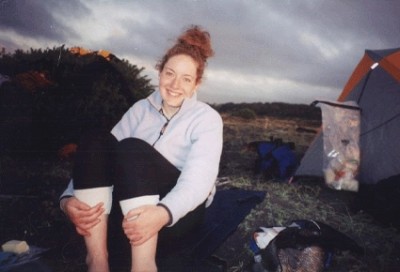The Chaitén volcano in Chile erupted—continues to erupt—this week.
And once, I was there.
It’s hard to admit now that, before I fell asleep that night, I rolled over in my sleeping bag and pressed my hands into the soft black sand and thought it was special, a beautiful thing, to walk on a volcanic beach. I wanted that to be my last thought before I slept. I wanted to end the day on that feeling, to epitomize the day with that special thing I got to do, the special place I got to be.
It’s hard to think about people evacuating their homes in Chaitén and wonder where everyone was on the night I was there. I saw people at the restaurant and a few at the market, but—thousands of evacuees? It’s as though the eruption roused them just to chase them out of the woodwork.
It’s hard to read about the irreversible devastation, the abrupt loss of flora and fauna, the halt to the agricultural industry, when the volcano seemed to me the gentle face of Mother Earth on that one night. Now I remember, the sand was so brutally black.
Nothing can stop a natural disaster like a volcanic eruption. No one can anticipate it, though now it seems like it will be impossible not to just wait for the next one, even if it takes another nine thousand years.
Here is a collection of photos of the violent eruption as the volcano’s contents sparked into a “dirty thunderstorm” taken by United Press International photographer Carlos Gutierrez: Tormenta eléctrica en erupción del volcán Chaitén. The caption translates to, “The startling (moving) beauty of two natural phenomena. An electrical storm (thunderstorm) above the gigantic column of ash that rises from the Chaitén volcano, reaching an altitude of 14 kilometers.”

